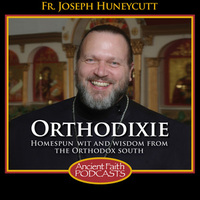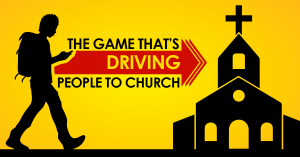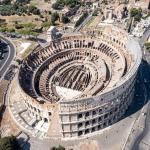by Aidan Nichols OP
In this article I attempt an overview in four parts.
First, I shall discuss why Catholics should not only show some ecumenical concern for Orthodoxy but also treat the Orthodox as their privileged or primary ecumenical partner.
Secondly, I shall ask why the schism between the Catholic and Orthodox churches occurred, focussing as it finally did on four historic ‘dividing issues’.
Thirdly, I shall evaluate the present state of Catholic-Orthodox relations, with particular reference to the problem of the ‘Uniate’ or Eastern Catholic churches.
Fourthly and finally, having been highly sympathetic and complimentary to the Orthodox throughout, I shall end by saying what, in my judgment, is wrong with the Orthodox Church and why it needs Catholicism for (humanly speaking) its own salvation.
Part 1
First, then, why should Catholics take the Orthodox as not only an ecumenical partner but the ecumenical partner par excellence? There are three kinds of reasons: historical, theological and practical – of which in most discussion only the historical and theological are mentioned since the third sort – what I term the ‘practical’ – takes us into areas of potential controversy among Western Catholics themselves.
The historical reasons for giving preference to Orthodoxy over all other separated communions turn on the fact that the schism between the Roman church and the ancient Chalcedonian churches of the East is the most tragic and burdensome of the splits in historic Christendom if we take up a universal rather than merely regional, perspective. Though segments of the Church of the Fathers were lost to the Great Church through the departure from Catholic unity of the Assyrian (Nestorian) and Oriental Orthodox (Monophysite) churches after the Councils of Ephesus (431) and Chalcedon (451) respectively, Christians representing the two principal cultures of the Mediterranean basin where the Gospel had its greatest flowering – the Greek and the Latin – lived in peace and unity with each other, despite occasional stirrings and some local difficulties right up until the end of the patristic epoch.
That epoch came to its climax with the Seventh Ecumenical Council, Nicaea II, in 787, the last Council Catholics and Orthodox have in common, and the Council which, in its teaching on the icon, and notably on the icon of Christ, brought to a triumphant close the series of conciliar clarifications of the Christological faith of the Church which had opened with Nicaea I in 325.
The iconography, liturgical life, Creeds and dogmatic believing of the ancient Church come down to us in forms at once Eastern and Western; and it was this rich unity of patristic culture, expressing as it did the faith of the apostolic community, which was shattered by the schism between Catholics and Orthodox, never (so far) to be repaired. And let me say at this point that Church history provides exceedingly few examples of historic schisms overcome, so if history is to be our teacher we have no grounds for confidence or optimism that this most catastrophic of all schisms will be undone. ‘Catastrophic’ because, historically, as the present pope has pointed out, taking up a metaphor suggested by a French ecclesiologist, the late Cardinal Yves Congar: each Church, West and East, henceforth could only breathe with one lung.
No Church could now lay claim to the total cultural patrimony of both Eastern and Western Chalcedonianism – that is, the christologically and therefore triadologically and soteriologically correct understanding of the Gospel. The result of the consequent rivalry and conflict was the creation of an invisible line down the middle of Europe. And what the historic consequences of that were we know well enough from the situation of the former Yugoslavia today.
After the historical, the theological. The second reason for giving priority to ecumenical relations with the Orthodox is theological. If the main point of ecumenism, or work for the restoration of the Church’s full unity, were simply to redress historic wrongs and defuse historically generated causes of conflict, then we might suppose that we should be equally – or perhaps even more – nterested in addressing the Catholic-Protestant divide. After all, there have been no actual wars of religion – simply as such – between Catholics and Orthodox, unlike those between Catholics and Protestants in sixteenth century France or the seventeenth century Holy Roman Empire.
But theologically there cannot be any doubt that the Catholic Church must accord greater importance to dialogue with the Orthodox than to conversations with any Protestant body. For the Orthodox churches are churches in the apostolic succession; they are bearers of the apostolic Tradition, witnesses to apostolic faith, worship and order – even though they are also, and at the same time, unhappily undered from the prima sedes, the first see. Their Fathers and other ecclesiastical writers, their liturgical texts and practices, their iconographic tradition, these remain loci theologici – authoritative sources – to which the Catholic theologian can and must turn in his or her intellectual construal of Catholic Christianity. And that cannot possibly be said of the monuments of Anglican, Lutheran, Reformed or any other kind of Protestantism.
To put the same point in another way: the separated Western communities have Christian traditions – in the plural, with a small ‘t’ – which may well be worthy of the Catholic theologian’s interest and respect. But only the Orthodox are, along with the Catholic Church, bearers of Holy Tradition – in the singular, with a capital ‘T’, that is, of the Gospel in its plenary organic transmission through the entirety of the life – credal, doxological, ethical – of Christ’s Church.
There is for Catholics, therefore, a theological imperative to restore unity with the Orthodox which is lacking in our attitude to Protestantism – though I should not be misinterpreted as saying that there is no theological basis for the impulse to Catholic-Protestant rapprochement for we have it in the prayer of our Lord himself at the Great Supper, ‘that they all may be one’. I am emphasising the greater priority we should give to relations with the Orthodox because I do not believe the optimistic statement of many professional ecumenists to the effect that all bilateral dialogues – all negotiations with individual separated communions – feed into each other in a positive and unproblematic way.
It would be nice to think that a step towards one separated group of Christians never meant a step away from another one, but such a pious claim does not become more credible with the frequency of its repeating. The issue of the ordination of women, to take but one particularly clear example, is evidently a topic where to move closer to world Protestantism is to move further from global Orthodoxy – and vice versa.
This brings me to my third reason for advocating ecumenical rapport with Orthodoxy: its practical advantages. At the present time, the Catholic Church, in many parts of the world, is undergoing one of the most serious crises in its history, a crisis resulting from a disorienting encounter with secular culture and compounded by a failure of Christian discernment on the part of many people over the last quarter century – from the highest office holders – to the ordinary faithful. This crisis touches many aspects of Church life but notably theology and catechesis, liturgy and spirituality, Religious life and Christian ethics at large. Orthodoxy is well placed to stabilise Catholicism in most if not all of these areas.
Were we to ask in a simply empirical or phenomenological frame of mind just what the Orthodox Church is like, we could describe it as a dogmatic Church, a liturgical Church, a contemplative Church, and a monastic Church – and in all these respects it furnishes a helpful counter-balance to certain features of much western Catholicism today.
Firstly, then, Orthodoxy is a dogmatic Church. It lives from out of the fullness of the truth impressed by the Spirit on the minds of the apostles at the first Pentecost, a fullness which transformed their awareness and made possible that specifically Christian kind of thinking we call dogmatic thought.
The Holy Trinity, the God-man, the Mother of God and the saints, the Church as the mystery of the Kingdom expressed in a common life on earth, the sacraments as means to humanity’s deification – our participation in the uncreated life of God himself: these are the truths among which the Orthodox live, move and have their being.
Orthodox theology in all its forms is a call to the renewal of our minds in Christ, something which finds its measure not in pure reason or secular culture but in the apostolic preaching attested to by the holy Fathers, in accord with the principal dogmata of faith as summed up in the Ecumenical Councils of the Church.
Secondly, Orthodoxy is a liturgical Church. It is a Church for which the Liturgy provides a total ambience expressed in poetry, music and iconography, text and gesture, and where the touchstone of the liturgical life is not the capacity of liturgy to express contemporary concerns legitimate though these may be in their own context), but, rather, the ability of the Liturgy to act as a vehicle of the Kingdom, our anticipated entry, even here and now, into the divine life.
Thirdly, Orthodoxy is a contemplative Church. Though certainly not ignoring the calls of missionary activity and practical charity, essential to the Gospel and the Gospel community as these are, the Orthodox lay their primary emphasis on the life of prayer as the absolutely necessary condition of all Christianity worth the name.
In the tradition of the desert fathers, and of such great theologian-mystics as the Cappadocian fathers, St Maximus and St Gregory Palamas, encapsulated as these contributions are in that anthology of Eastern Christian spirituality the Philokalia, Orthodoxy gives testimony to the primacy of what the Saviour himself called the first and greatest commandment, to love the Lord your God with your whole heart, soul, mind and strength, for it is in the light of this commandment with its appeal for a God-centred process of personal conversion and sanctification – that all our efforts to live out its companion commandment (to love our neighbour as ourself) must be guided.
And fourthly, Orthodoxy is a monastic Church, a Church with a monastic heart where the monasteries provide the spiritual fathers of the bishops, the counsellors of the laity and the example of a Christian maximalism. A Church without a flourishing monasticism, without the lived ‘martyrdom’ of an asceticism inspired by the Paschal Mystery of the Lord’s Cross and Resurrection, could hardly be a Church according to the mind of the Christ of the Gospels, for monasticism, of all Christian life ways, is the one which most clearly and publicly leaves all things behind for the sake of the Kingdom.
Practically speaking, then, the re-entry into Catholic unity of this dogmatic, liturgical, contemplative and monastic Church could only have the effect of steadying and strengthening those aspects of Western Catholicism which today are most under threat by the corrosives of secularism and theological liberalism.
To be continued …











